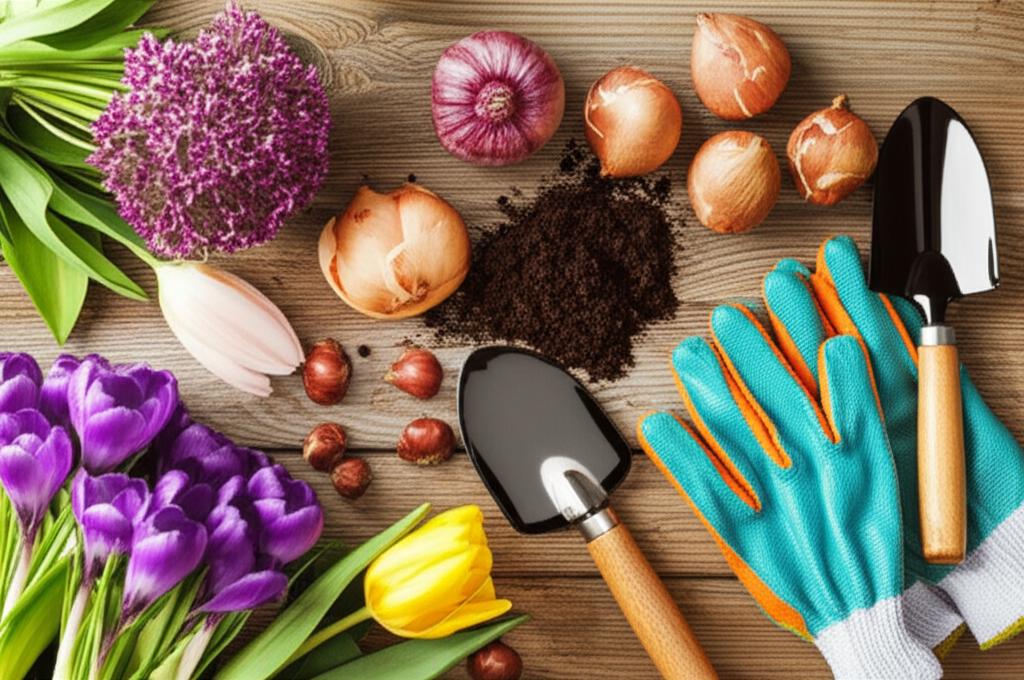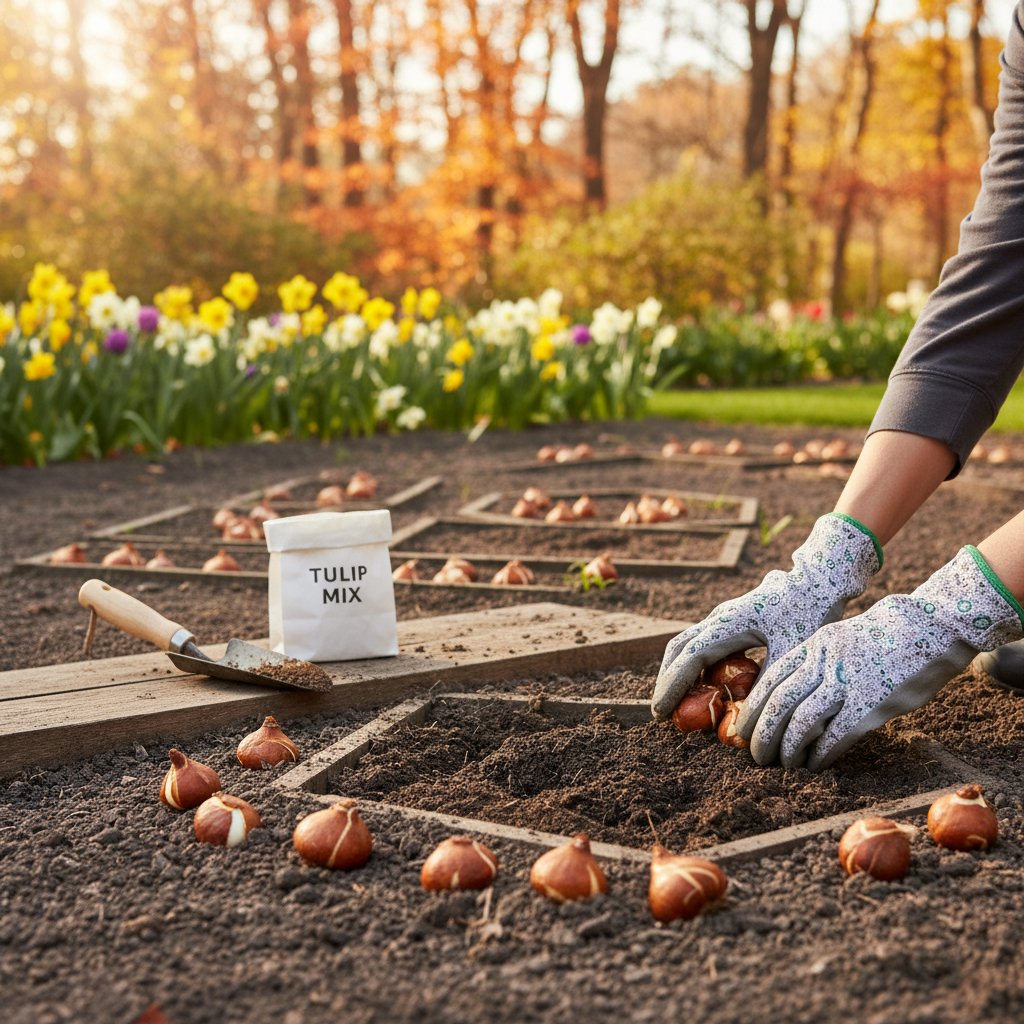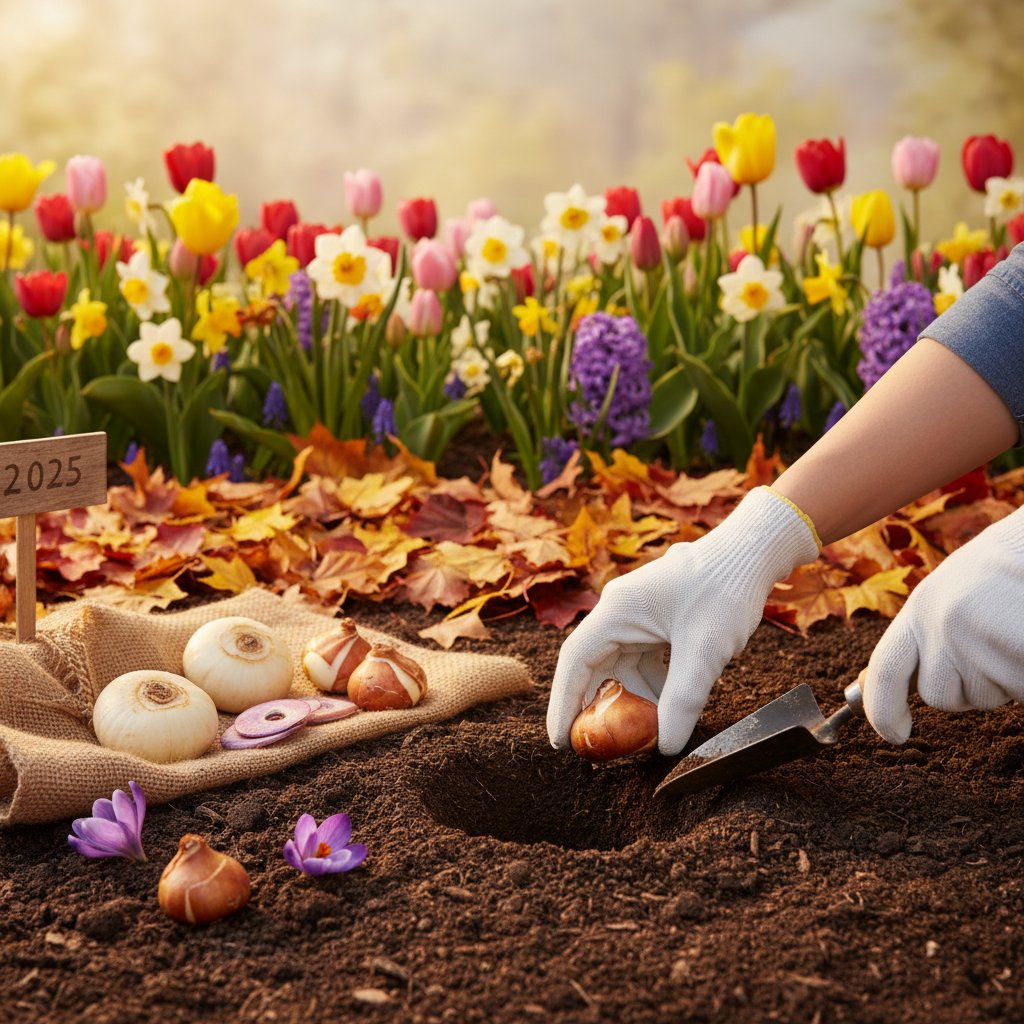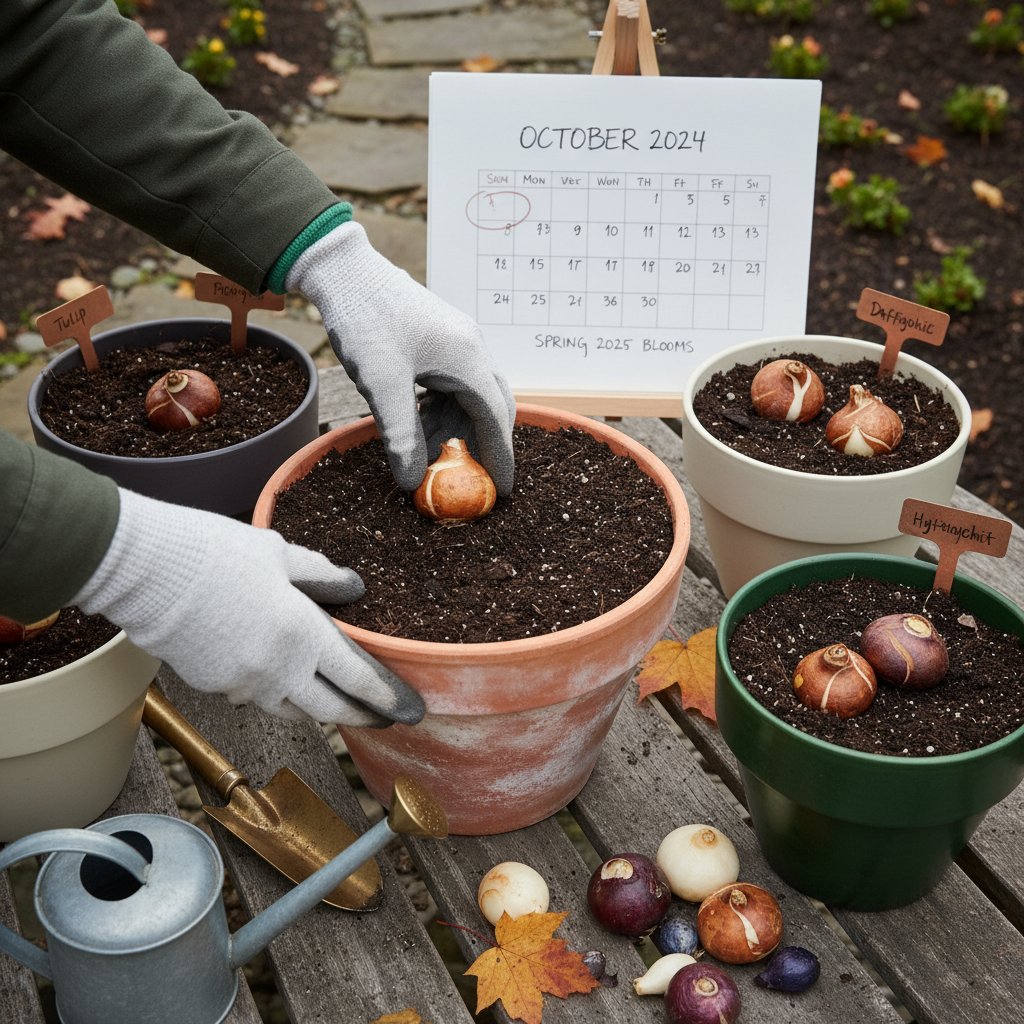Select Top Fall Bulbs for Striking 2025 Spring Gardens
Early spring often reveals bare patches in the yard, where fresh color would lift spirits after winter. Homeowners frequently desire quicker signs of renewal amid dormant soil and faded lawns. Planting fall bulbs addresses this need directly, delivering reliable bursts of beauty with minimal ongoing work.
Fall planting aligns with bulbs' natural cycle, allowing them to root during cooler months before emerging as temperatures rise. This approach yields a garden that transitions seamlessly into spring, offering satisfaction through planned anticipation. Select varieties suited to your climate and space for optimal results.
How Fall Bulbs Function in the Garden
Bulbs serve as compact energy reserves underground, containing embryonic leaves and flowers. Planted in autumn, they develop roots in the cold soil, drawing on stored nutrients to sprout when conditions warm. This process positions bulbs as an efficient method for introducing seasonal interest without complex maintenance.
Most bulbs thrive in USDA zones 3 through 8, tolerating frost while requiring a period of winter chill for proper blooming. Their reliability stems from this dormancy phase, which mimics wild conditions and promotes strong establishment. Understanding this biology helps gardeners time plantings accurately, typically from September to November depending on location.
Selecting Ideal Bulbs for Extended Bloom Sequences
To achieve prolonged color, combine early-, mid-, and late-blooming varieties. Early types emerge in late winter or early spring, mid-season options peak in March or April, and late bloomers extend into May. This succession creates a continuous floral progression, maximizing visual impact over weeks.
Consider sunlight needs, with most preferring full sun to partial shade, and soil type for best adaptation. Purchase firm, plump bulbs from reputable sources to ensure viability. Aim for a mix that complements your garden's aesthetic, balancing heights and hues for harmony.
Tulips
Tulips offer versatile color options, spanning pastels like soft pink and lavender to vivid crimson and deep violet. Opt for species tulips for naturalizing or hybrid types like Darwin hybrids for taller stems reaching 24 inches. Plant in groups of 10 to 15 for bold clusters, spacing 4 to 6 inches apart to foster a natural drift effect.
Integrate tulips into mixed borders by interplanting with perennials such as hostas, which hide fading foliage. Early varieties like 'Apeldoorn' bloom in March, while late ones like 'Queen of Night' arrive in May, providing up to eight weeks of display. Their upright form suits formal designs or casual meadows alike.
Daffodils
Daffodils deliver dependable cheer through trumpet-shaped flowers in shades of yellow, white, and orange. Varieties like 'Tete-a-Tete' offer petite, early blooms at 6 inches tall, ideal for front borders, while 'King Alfred' provides classic 18-inch stems for back rows. Space bulbs 4 to 5 inches apart in sunny spots for best flowering.
These bulbs resist deer due to toxic alkaloids, making them suitable for open areas. They multiply over time, forming colonies that require division every five years to maintain vigor. Pair daffodils with evergreens for year-round structure, enhancing garden depth.
Crocuses
Crocuses signal spring's onset with goblet-shaped flowers in purple, gold, and white, blooming as early as February in mild climates. Choose 'Flower Record' for rich violet petals or 'Pickwick' for striped patterns, planting 20 to 30 bulbs per square foot for carpet-like coverage. Their low height of 4 to 6 inches fits lawns, where mowing resumes after bloom.
Scatter crocuses under deciduous trees to capture winter sun before leaf canopy forms. These corms naturalize readily in well-drained soil, returning stronger annually. Their delicate appearance belies robust performance in rocky or grassy settings.
Hyacinths
Hyacinths captivate with intensely fragrant spikes of tiny florets in blue, pink, and white, forming 8- to 12-inch towers. Select prepared bulbs for indoor forcing if desired, or standard ones for outdoor beds, planting 5 to 6 inches deep. Position near pathways to savor their sweet scent during evening strolls.
Dense flower heads provide vertical accent in containers or foundations. After blooming, allow foliage to mature for energy storage, supporting future seasons. Hyacinths pair well with ferns for textured contrast in shaded borders.
Alliums
Alliums feature ornamental globes on sturdy stems up to 36 inches, in purple, pink, and white, evoking fireworks in bloom. Try 'Globemaster' for 10-inch spheres or 'Mount Everest' for white elegance, spacing 8 to 12 inches apart. Their strappy leaves emerge early, adding subtle interest before flowers unfurl in late spring.
These bulbs draw beneficial insects, supporting ecosystem health. Plant in drifts amid perennials to create focal points, as their seed heads persist for dried arrangements. Alliums tolerate dry conditions once established, suiting xeriscape designs.
Soil Preparation Essentials
Select sites with well-draining soil to prevent rot, testing by digging a hole and filling with water; it should drain within an hour. Amend heavy clay with organic matter like aged compost at a rate of 2 inches per 12 inches of soil depth. For sandy soils, incorporate similar amendments to retain moisture and nutrients.
Work amendments into the top 12 inches using a garden fork, removing rocks and weeds. Test pH, aiming for 6.0 to 7.0; adjust with lime if acidic. This preparation ensures bulbs access oxygen and sustenance for root development.
Plant bulbs pointed end up, at depths three times their height: 6 to 8 inches for large types like tulips, 3 to 4 inches for smaller crocuses. Firm soil gently and water thoroughly to eliminate air pockets, promoting immediate rooting.
Post-Planting Maintenance
Apply a 2- to 3-inch mulch layer of shredded bark or straw after the ground freezes to moderate temperature swings and suppress weeds. Monitor for excessive dryness in fall, providing 1 inch of water weekly if rainfall lacks. Avoid fertilizing at planting unless soil tests indicate deficiency; use a balanced, slow-release product sparingly in spring.
In spring, deadhead spent flowers to redirect energy but leave foliage intact until it yellows and withers, typically six weeks post-bloom. Gently remove yellowed leaves by twisting at the base to avoid damaging emerging shoots. This practice sustains bulb health for perennial performance.
Integrating Bulbs into Garden Layouts
Drifts of 50 or more identical bulbs establish bold statements, while intermingling colors fosters dynamic patterns. Position taller alliums and daffodils at the rear, mid-height tulips centrally, and low crocuses upfront for layered visibility. Incorporate bulbs into vegetable plots for early color before crops dominate.
For container gardening, use pots at least 12 inches deep with drainage holes, layering bulb types: deepest for tulips, mid for daffodils, shallowest for crocuses. This 'bulb lasagna' method yields sequential blooms in confined spaces. Experiment with edgings along fences or pathways for defined, welcoming borders.
Anticipating Lasting Garden Rewards
Fall bulb planting invests in future vitality, transforming routine spaces into seasonal highlights. Varied selections and diligent preparation yield resilient displays that evolve naturally. Observe the progression from root establishment to floral emergence, noting adjustments for subsequent years.
As blooms appear, they affirm the value of foresight, enhancing not only aesthetics but also pollinator habitats. This cycle encourages ongoing experimentation, building a garden attuned to local rhythms. Commit to this practice for enduring, joyful outdoor experiences.



